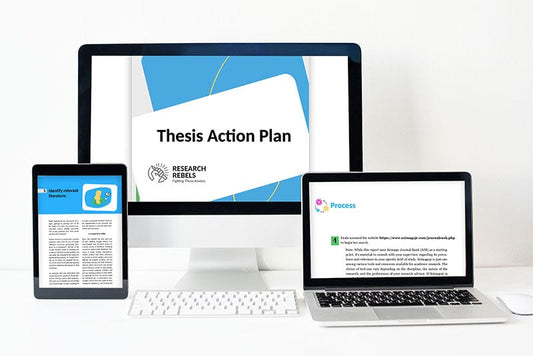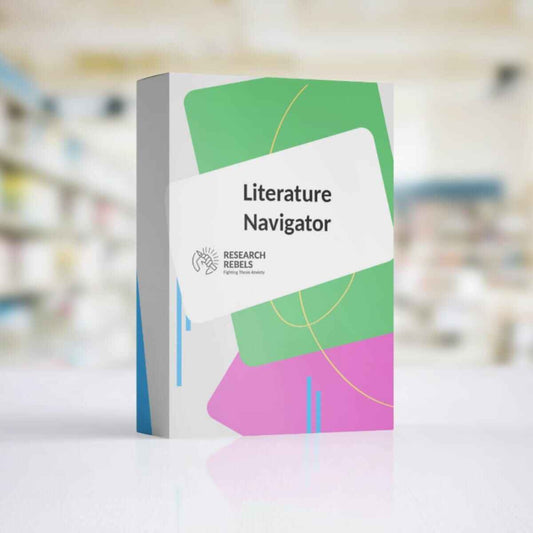Step-by-Step Process on How to Find the Literature Review in an Article
Finding the literature review in an article can seem tough, but it's a useful skill for research. A literature review helps you see what other researchers have already studied. This guide will show you how to spot and understand the literature review section in any article.
Key Takeaways
- A literature review summarizes past research on a topic.
- Look for headings like 'Literature Review' or 'Background' to find it.
- Literature reviews can be organized by themes or by the order of events.
- Use research databases to find articles with good literature reviews.
- Always check if the sources in the literature review are credible.
Understanding the Purpose of a Literature Review
Defining a Literature Review
A literature review is a summary of the published work in a field of study. It is often written as part of a thesis, dissertation, or research paper to situate your work in relation to existing knowledge. Unlike an annotated bibliography, which provides a list and brief summary of articles, the literature review analyzes relationships and connections among different works.
Importance in Academic Research
The literature review gives you a chance to show that you have examined the breadth of knowledge and can justify your thesis or research questions. It helps to establish the focus and purpose of your research. By reviewing existing studies, you can highlight gaps in the literature and emphasize the timeliness of your topic.
Common Misconceptions
One common misconception is that a literature review is just a summary of sources. In reality, it involves critical analysis and synthesis of the existing research. Another misconception is that it only includes positive findings, but a good literature review also discusses conflicting studies and debates within the field.
Identifying the Literature Review Section
When you are trying to find the literature review in an article, there are a few key things to look for. Typically, the literature review is placed near the beginning of the article, often right after the introduction. This section sets the stage for the research by summarizing previous studies and highlighting gaps that the current study aims to fill.
Look for headings such as "Literature Review," "Review of the Literature," or similar phrases. These headings are clear indicators that you have found the right section. Sometimes, the literature review might be integrated into the introduction or spread across several sections, especially in interdisciplinary studies.
Different academic fields may have their own conventions for where and how the literature review is presented. For example, in social sciences, it might be a standalone section, while in natural sciences, it could be part of the introduction. Understanding these variations can help you locate the literature review more efficiently.
Analyzing the Structure of a Literature Review
Common Organizational Patterns
When analyzing a literature review, you will notice that there are various ways to organize the content. A common approach is thematic organization, where the review is divided into different themes or topics. Another method is chronological organization, which arranges the literature based on the timeline of the research. Sometimes, these strategies are combined to provide a comprehensive overview.
Thematic vs. Chronological Approaches
In a thematic approach, the literature is grouped by themes or topics, making it easier to identify key trends and patterns. On the other hand, a chronological approach arranges the literature by the date of publication, helping to show the development of research over time. Depending on the length and scope of your review, you might choose one method or combine both.
Evaluating Coherence and Flow
To ensure your literature review is effective, it's crucial to evaluate its coherence and flow. This means checking if the sections logically follow each other and if the transitions between them are smooth. A well-structured review will guide the reader through the research, making it easier to understand the relationships between different studies. For more information on making thesis writing fun and easy, visit the [research rebels® LinkedIn page](https://www.linkedin.com/company/research-rebels/).
Utilizing Research Databases Effectively
Choosing Appropriate Databases
Selecting the right database is crucial for your research. Start by finalizing your research question. This will help you identify which databases are most relevant. For example, if your topic is in the medical field, PubMed might be a good choice. Always check if the topic has been covered in other disciplines' databases to get a variety of perspectives.
Advanced Search Techniques
To get the best results, use advanced search techniques. This includes using keywords, Boolean operators, and filters. For instance, you can use AND, OR, and NOT to narrow or broaden your search. Document your process, including the database, search terms, and notes about the search process. This will make it easier to replicate or refine your search later.
Accessing Full Texts
Once you have your search results, the next step is accessing the full texts. Many databases offer direct links to full articles, but some may require a subscription. If you can't access an article, check if your institution provides access through interlibrary loans or other services. Save your search results in a citation management tool like Zotero, Mendeley, or EndNote to keep everything organized.
Evaluating the Quality of Sources
When conducting a literature review, it's crucial to assess the quality of your sources. This ensures that your research is built on a solid foundation of reliable information.
Synthesizing Information from Multiple Sources
Synthesizing information from multiple sources is a crucial step in writing a literature review. It involves combining insights from various studies to create a coherent narrative. This process helps readers understand how different sources converse with each other and how they overlap in their findings. To achieve this, you need to organize similar ideas together and highlight key themes and trends.
Techniques for Synthesis
Start by summarizing the main points of each source. Then, integrate these points to form a unified whole. This not only provides an overview but also shows how the sources relate to each other. Additionally, add your own interpretations where possible, discussing the significance of the findings in relation to the literature as a whole.
Highlighting Key Themes and Trends
Identify recurring themes and trends across the sources. This will help you to present a clear picture of the current state of research. Use bullet points to list these themes for easy reference:
- Common methodologies
- Key findings
- Areas of agreement and disagreement
Integrating Diverse Perspectives
Incorporate different viewpoints to provide a balanced analysis. This includes acknowledging the strengths and weaknesses of each source. By doing so, you offer a comprehensive view that respects the diversity of opinions in the field. This approach not only enriches your review but also makes it more credible.
Ethical Considerations in Literature Reviews
When writing a literature review, it's crucial to give credit to the original authors. Proper citation practices ensure that you acknowledge the work of others and avoid plagiarism. Always use the appropriate citation style as required by your academic institution or publication.
Plagiarism is a serious offense in academic research. It involves using someone else's work without giving them credit. To avoid this, make sure to paraphrase correctly and cite all sources. Ethical principles are an important aspect of qualitative research and must be adhered to strictly.
Respecting the rights of authors means not misrepresenting their work or taking credit for their ideas. Always seek permission if you need to use large portions of text or data. This not only respects the original authors but also maintains the integrity of your own work.
When conducting literature reviews, it's crucial to consider ethical aspects. This ensures the integrity and credibility of your work. If you're struggling with your thesis, our step-by-step Thesis Action Plan can help. Visit our website to learn more and claim your special offer now!
Conclusion
In conclusion, finding the literature review in an article is a vital skill for any researcher. By following a systematic approach, you can efficiently locate and understand the literature review section. Start by identifying the structure of the article and look for headings or subheadings that indicate a review of existing research. Pay attention to the introduction and discussion sections, as they often contain summaries of the literature. Additionally, using search techniques and databases can help you find relevant articles more quickly. Remember, a thorough literature review not only summarizes existing knowledge but also critically evaluates and synthesizes it to provide a comprehensive understanding of the topic. By mastering these steps, you can enhance your research skills and contribute valuable insights to your field.
Frequently Asked Questions
What is a literature review?
A literature review is a summary of studies and articles on a specific topic. It shows what is already known and where more research is needed.
Why is a literature review important?
A literature review helps you understand the background of your topic. It shows what has been done and what still needs to be explored.
Where can I find the literature review in an article?
The literature review is usually at the beginning of an article. Look for headings like 'Introduction' or 'Background.'
What are common mistakes when doing a literature review?
Common mistakes include not organizing sources well and not citing them correctly. It’s also important to cover both older and newer studies.
How do I choose good sources for my literature review?
Choose sources that are credible and relevant to your topic. Look for studies published in respected journals or books.
What is the best way to organize a literature review?
You can organize your literature review by themes or by the date of the studies. Make sure it flows well and is easy to read.
Step-by-Step Process on How to Find the Literature Review in an Article
Finding the literature review in an article can seem tough, but it's a useful skill for research. A literature review helps you see what other researchers have already studied. This guide will show you how to spot and understand the literature review section in any article.
Key Takeaways
- A literature review summarizes past research on a topic.
- Look for headings like 'Literature Review' or 'Background' to find it.
- Literature reviews can be organized by themes or by the order of events.
- Use research databases to find articles with good literature reviews.
- Always check if the sources in the literature review are credible.
Understanding the Purpose of a Literature Review
Defining a Literature Review
A literature review is a summary of the published work in a field of study. It is often written as part of a thesis, dissertation, or research paper to situate your work in relation to existing knowledge. Unlike an annotated bibliography, which provides a list and brief summary of articles, the literature review analyzes relationships and connections among different works.
Importance in Academic Research
The literature review gives you a chance to show that you have examined the breadth of knowledge and can justify your thesis or research questions. It helps to establish the focus and purpose of your research. By reviewing existing studies, you can highlight gaps in the literature and emphasize the timeliness of your topic.
Common Misconceptions
One common misconception is that a literature review is just a summary of sources. In reality, it involves critical analysis and synthesis of the existing research. Another misconception is that it only includes positive findings, but a good literature review also discusses conflicting studies and debates within the field.
Identifying the Literature Review Section
When you are trying to find the literature review in an article, there are a few key things to look for. Typically, the literature review is placed near the beginning of the article, often right after the introduction. This section sets the stage for the research by summarizing previous studies and highlighting gaps that the current study aims to fill.
Look for headings such as "Literature Review," "Review of the Literature," or similar phrases. These headings are clear indicators that you have found the right section. Sometimes, the literature review might be integrated into the introduction or spread across several sections, especially in interdisciplinary studies.
Different academic fields may have their own conventions for where and how the literature review is presented. For example, in social sciences, it might be a standalone section, while in natural sciences, it could be part of the introduction. Understanding these variations can help you locate the literature review more efficiently.
Analyzing the Structure of a Literature Review
Common Organizational Patterns
When analyzing a literature review, you will notice that there are various ways to organize the content. A common approach is thematic organization, where the review is divided into different themes or topics. Another method is chronological organization, which arranges the literature based on the timeline of the research. Sometimes, these strategies are combined to provide a comprehensive overview.
Thematic vs. Chronological Approaches
In a thematic approach, the literature is grouped by themes or topics, making it easier to identify key trends and patterns. On the other hand, a chronological approach arranges the literature by the date of publication, helping to show the development of research over time. Depending on the length and scope of your review, you might choose one method or combine both.
Evaluating Coherence and Flow
To ensure your literature review is effective, it's crucial to evaluate its coherence and flow. This means checking if the sections logically follow each other and if the transitions between them are smooth. A well-structured review will guide the reader through the research, making it easier to understand the relationships between different studies. For more information on making thesis writing fun and easy, visit the [research rebels® LinkedIn page](https://www.linkedin.com/company/research-rebels/).
Utilizing Research Databases Effectively
Choosing Appropriate Databases
Selecting the right database is crucial for your research. Start by finalizing your research question. This will help you identify which databases are most relevant. For example, if your topic is in the medical field, PubMed might be a good choice. Always check if the topic has been covered in other disciplines' databases to get a variety of perspectives.
Advanced Search Techniques
To get the best results, use advanced search techniques. This includes using keywords, Boolean operators, and filters. For instance, you can use AND, OR, and NOT to narrow or broaden your search. Document your process, including the database, search terms, and notes about the search process. This will make it easier to replicate or refine your search later.
Accessing Full Texts
Once you have your search results, the next step is accessing the full texts. Many databases offer direct links to full articles, but some may require a subscription. If you can't access an article, check if your institution provides access through interlibrary loans or other services. Save your search results in a citation management tool like Zotero, Mendeley, or EndNote to keep everything organized.
Evaluating the Quality of Sources
When conducting a literature review, it's crucial to assess the quality of your sources. This ensures that your research is built on a solid foundation of reliable information.
Synthesizing Information from Multiple Sources
Synthesizing information from multiple sources is a crucial step in writing a literature review. It involves combining insights from various studies to create a coherent narrative. This process helps readers understand how different sources converse with each other and how they overlap in their findings. To achieve this, you need to organize similar ideas together and highlight key themes and trends.
Techniques for Synthesis
Start by summarizing the main points of each source. Then, integrate these points to form a unified whole. This not only provides an overview but also shows how the sources relate to each other. Additionally, add your own interpretations where possible, discussing the significance of the findings in relation to the literature as a whole.
Highlighting Key Themes and Trends
Identify recurring themes and trends across the sources. This will help you to present a clear picture of the current state of research. Use bullet points to list these themes for easy reference:
- Common methodologies
- Key findings
- Areas of agreement and disagreement
Integrating Diverse Perspectives
Incorporate different viewpoints to provide a balanced analysis. This includes acknowledging the strengths and weaknesses of each source. By doing so, you offer a comprehensive view that respects the diversity of opinions in the field. This approach not only enriches your review but also makes it more credible.
Ethical Considerations in Literature Reviews
When writing a literature review, it's crucial to give credit to the original authors. Proper citation practices ensure that you acknowledge the work of others and avoid plagiarism. Always use the appropriate citation style as required by your academic institution or publication.
Plagiarism is a serious offense in academic research. It involves using someone else's work without giving them credit. To avoid this, make sure to paraphrase correctly and cite all sources. Ethical principles are an important aspect of qualitative research and must be adhered to strictly.
Respecting the rights of authors means not misrepresenting their work or taking credit for their ideas. Always seek permission if you need to use large portions of text or data. This not only respects the original authors but also maintains the integrity of your own work.
When conducting literature reviews, it's crucial to consider ethical aspects. This ensures the integrity and credibility of your work. If you're struggling with your thesis, our step-by-step Thesis Action Plan can help. Visit our website to learn more and claim your special offer now!
Conclusion
In conclusion, finding the literature review in an article is a vital skill for any researcher. By following a systematic approach, you can efficiently locate and understand the literature review section. Start by identifying the structure of the article and look for headings or subheadings that indicate a review of existing research. Pay attention to the introduction and discussion sections, as they often contain summaries of the literature. Additionally, using search techniques and databases can help you find relevant articles more quickly. Remember, a thorough literature review not only summarizes existing knowledge but also critically evaluates and synthesizes it to provide a comprehensive understanding of the topic. By mastering these steps, you can enhance your research skills and contribute valuable insights to your field.
Frequently Asked Questions
What is a literature review?
A literature review is a summary of studies and articles on a specific topic. It shows what is already known and where more research is needed.
Why is a literature review important?
A literature review helps you understand the background of your topic. It shows what has been done and what still needs to be explored.
Where can I find the literature review in an article?
The literature review is usually at the beginning of an article. Look for headings like 'Introduction' or 'Background.'
What are common mistakes when doing a literature review?
Common mistakes include not organizing sources well and not citing them correctly. It’s also important to cover both older and newer studies.
How do I choose good sources for my literature review?
Choose sources that are credible and relevant to your topic. Look for studies published in respected journals or books.
What is the best way to organize a literature review?
You can organize your literature review by themes or by the date of the studies. Make sure it flows well and is easy to read.
Step-by-Step Process on How to Find the Literature Review in an Article
Finding the literature review in an article can seem tough, but it's a useful skill for research. A literature review helps you see what other researchers have already studied. This guide will show you how to spot and understand the literature review section in any article.
Key Takeaways
- A literature review summarizes past research on a topic.
- Look for headings like 'Literature Review' or 'Background' to find it.
- Literature reviews can be organized by themes or by the order of events.
- Use research databases to find articles with good literature reviews.
- Always check if the sources in the literature review are credible.
Understanding the Purpose of a Literature Review
Defining a Literature Review
A literature review is a summary of the published work in a field of study. It is often written as part of a thesis, dissertation, or research paper to situate your work in relation to existing knowledge. Unlike an annotated bibliography, which provides a list and brief summary of articles, the literature review analyzes relationships and connections among different works.
Importance in Academic Research
The literature review gives you a chance to show that you have examined the breadth of knowledge and can justify your thesis or research questions. It helps to establish the focus and purpose of your research. By reviewing existing studies, you can highlight gaps in the literature and emphasize the timeliness of your topic.
Common Misconceptions
One common misconception is that a literature review is just a summary of sources. In reality, it involves critical analysis and synthesis of the existing research. Another misconception is that it only includes positive findings, but a good literature review also discusses conflicting studies and debates within the field.
Identifying the Literature Review Section
When you are trying to find the literature review in an article, there are a few key things to look for. Typically, the literature review is placed near the beginning of the article, often right after the introduction. This section sets the stage for the research by summarizing previous studies and highlighting gaps that the current study aims to fill.
Look for headings such as "Literature Review," "Review of the Literature," or similar phrases. These headings are clear indicators that you have found the right section. Sometimes, the literature review might be integrated into the introduction or spread across several sections, especially in interdisciplinary studies.
Different academic fields may have their own conventions for where and how the literature review is presented. For example, in social sciences, it might be a standalone section, while in natural sciences, it could be part of the introduction. Understanding these variations can help you locate the literature review more efficiently.
Analyzing the Structure of a Literature Review
Common Organizational Patterns
When analyzing a literature review, you will notice that there are various ways to organize the content. A common approach is thematic organization, where the review is divided into different themes or topics. Another method is chronological organization, which arranges the literature based on the timeline of the research. Sometimes, these strategies are combined to provide a comprehensive overview.
Thematic vs. Chronological Approaches
In a thematic approach, the literature is grouped by themes or topics, making it easier to identify key trends and patterns. On the other hand, a chronological approach arranges the literature by the date of publication, helping to show the development of research over time. Depending on the length and scope of your review, you might choose one method or combine both.
Evaluating Coherence and Flow
To ensure your literature review is effective, it's crucial to evaluate its coherence and flow. This means checking if the sections logically follow each other and if the transitions between them are smooth. A well-structured review will guide the reader through the research, making it easier to understand the relationships between different studies. For more information on making thesis writing fun and easy, visit the [research rebels® LinkedIn page](https://www.linkedin.com/company/research-rebels/).
Utilizing Research Databases Effectively
Choosing Appropriate Databases
Selecting the right database is crucial for your research. Start by finalizing your research question. This will help you identify which databases are most relevant. For example, if your topic is in the medical field, PubMed might be a good choice. Always check if the topic has been covered in other disciplines' databases to get a variety of perspectives.
Advanced Search Techniques
To get the best results, use advanced search techniques. This includes using keywords, Boolean operators, and filters. For instance, you can use AND, OR, and NOT to narrow or broaden your search. Document your process, including the database, search terms, and notes about the search process. This will make it easier to replicate or refine your search later.
Accessing Full Texts
Once you have your search results, the next step is accessing the full texts. Many databases offer direct links to full articles, but some may require a subscription. If you can't access an article, check if your institution provides access through interlibrary loans or other services. Save your search results in a citation management tool like Zotero, Mendeley, or EndNote to keep everything organized.
Evaluating the Quality of Sources
When conducting a literature review, it's crucial to assess the quality of your sources. This ensures that your research is built on a solid foundation of reliable information.
Synthesizing Information from Multiple Sources
Synthesizing information from multiple sources is a crucial step in writing a literature review. It involves combining insights from various studies to create a coherent narrative. This process helps readers understand how different sources converse with each other and how they overlap in their findings. To achieve this, you need to organize similar ideas together and highlight key themes and trends.
Techniques for Synthesis
Start by summarizing the main points of each source. Then, integrate these points to form a unified whole. This not only provides an overview but also shows how the sources relate to each other. Additionally, add your own interpretations where possible, discussing the significance of the findings in relation to the literature as a whole.
Highlighting Key Themes and Trends
Identify recurring themes and trends across the sources. This will help you to present a clear picture of the current state of research. Use bullet points to list these themes for easy reference:
- Common methodologies
- Key findings
- Areas of agreement and disagreement
Integrating Diverse Perspectives
Incorporate different viewpoints to provide a balanced analysis. This includes acknowledging the strengths and weaknesses of each source. By doing so, you offer a comprehensive view that respects the diversity of opinions in the field. This approach not only enriches your review but also makes it more credible.
Ethical Considerations in Literature Reviews
When writing a literature review, it's crucial to give credit to the original authors. Proper citation practices ensure that you acknowledge the work of others and avoid plagiarism. Always use the appropriate citation style as required by your academic institution or publication.
Plagiarism is a serious offense in academic research. It involves using someone else's work without giving them credit. To avoid this, make sure to paraphrase correctly and cite all sources. Ethical principles are an important aspect of qualitative research and must be adhered to strictly.
Respecting the rights of authors means not misrepresenting their work or taking credit for their ideas. Always seek permission if you need to use large portions of text or data. This not only respects the original authors but also maintains the integrity of your own work.
When conducting literature reviews, it's crucial to consider ethical aspects. This ensures the integrity and credibility of your work. If you're struggling with your thesis, our step-by-step Thesis Action Plan can help. Visit our website to learn more and claim your special offer now!
Conclusion
In conclusion, finding the literature review in an article is a vital skill for any researcher. By following a systematic approach, you can efficiently locate and understand the literature review section. Start by identifying the structure of the article and look for headings or subheadings that indicate a review of existing research. Pay attention to the introduction and discussion sections, as they often contain summaries of the literature. Additionally, using search techniques and databases can help you find relevant articles more quickly. Remember, a thorough literature review not only summarizes existing knowledge but also critically evaluates and synthesizes it to provide a comprehensive understanding of the topic. By mastering these steps, you can enhance your research skills and contribute valuable insights to your field.
Frequently Asked Questions
What is a literature review?
A literature review is a summary of studies and articles on a specific topic. It shows what is already known and where more research is needed.
Why is a literature review important?
A literature review helps you understand the background of your topic. It shows what has been done and what still needs to be explored.
Where can I find the literature review in an article?
The literature review is usually at the beginning of an article. Look for headings like 'Introduction' or 'Background.'
What are common mistakes when doing a literature review?
Common mistakes include not organizing sources well and not citing them correctly. It’s also important to cover both older and newer studies.
How do I choose good sources for my literature review?
Choose sources that are credible and relevant to your topic. Look for studies published in respected journals or books.
What is the best way to organize a literature review?
You can organize your literature review by themes or by the date of the studies. Make sure it flows well and is easy to read.












